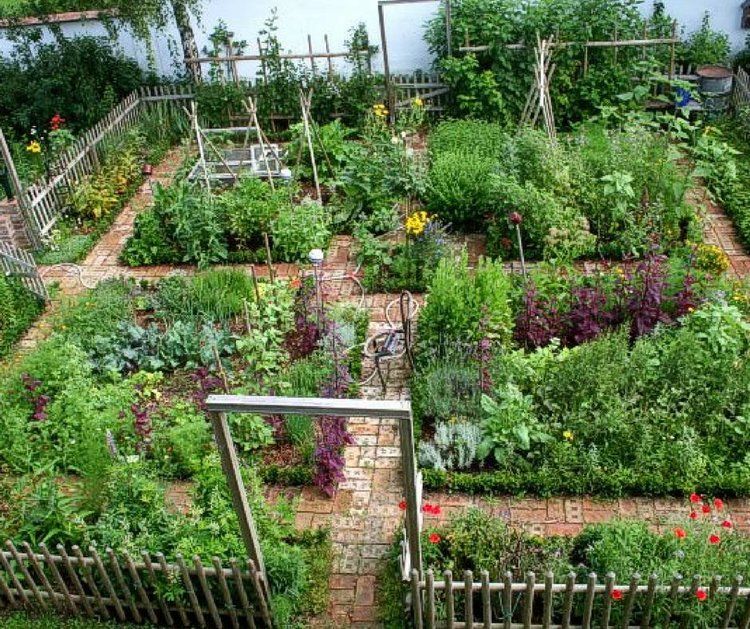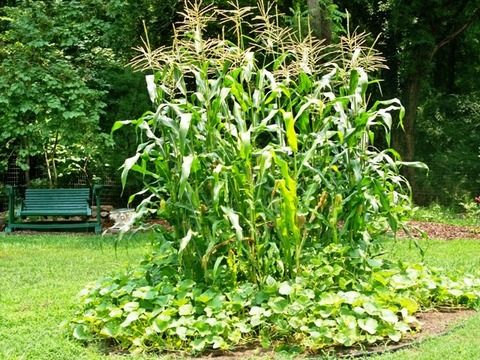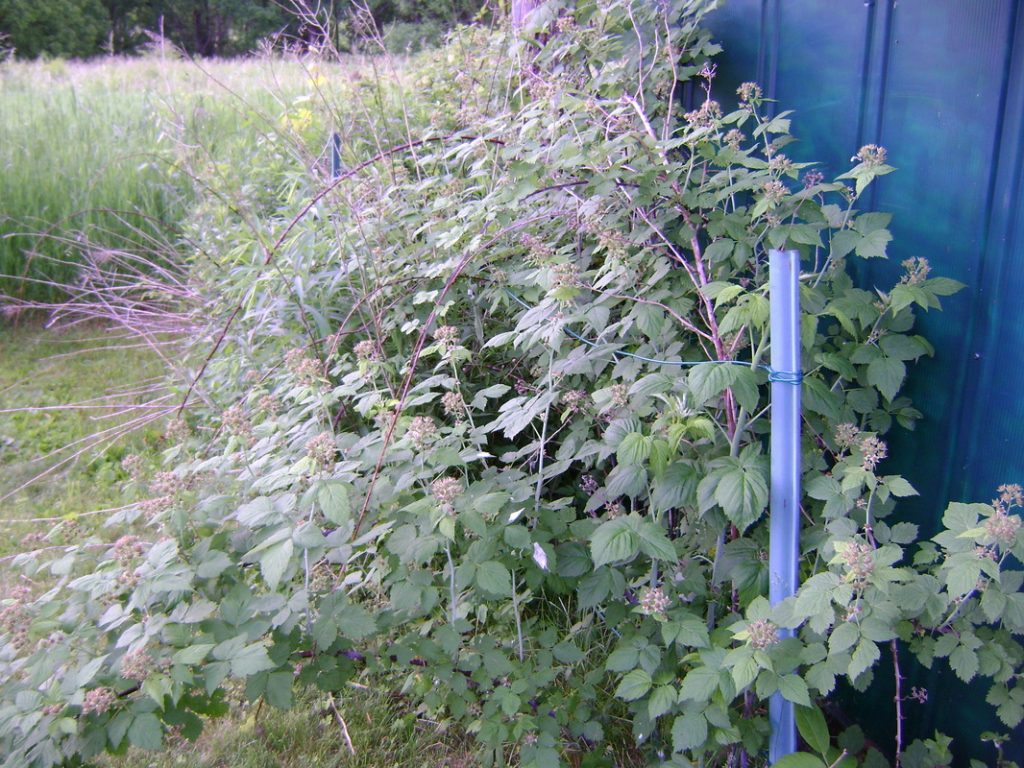What are plant guilds?
Plant guilds are combinations of 3 or more plants that are grouped, or assembled, together in a way that one plant both benefits the others, and benefits from the others. Generally, there is one central element that everything else builds upon. It could be another plant, i.e. an oak or cherry tree, or an animal like a cow or dog. The benefits may be hard for us to see at first. Until we stop to let nature explain what is going on.
Like much of organic or regenerative gardening, plant guilds tend to mimic nature. People of the past have noticed that in the forest or natural field, particular plants grow well together. Over the years they have studied and examined the reasons why. Now we can use that knowledge to repeat what works well in nature, and create planting guilds of our own that will work in our gardens.
What makes up a guild?

Plant guilds can be as simple as plants that are placed together to avoid root competition. (Some roots sprawl at the surface while others mine deep into the subsurface.) They can be very complex multi-layered, multi-succession food forests. But they come down to the same main factors.
Plants in a particular guild will work together for:
Nutrient exchange, including water.
The first thing you learn about growing anything, is the importance of Nitrogen. Plants can not use the Nitrogen that is in the atmosphere. They need other things in the soil to exchange the nitrogen with. Plants need every nutrient and mineral the same as us. Having plants that will bring different nutrients to the party is key to a robust garden system.
Root competition.
As mentioned above, some plants have roots that sprawl out under a shallow layer of soil. Others have roots that generally mine down into the subsoil. Many plants have a combination of the two, but they favour one over the other. Using the lesser favoured roots in times of need.
Physical shelter from wind, weather and sun.
The larger plants shelter the smaller ones, yes. They can also shelter small insects and animals that can be very beneficial to your garden. Both in the summer and winter. All the more reason to not cut everything back in the fall.
Pest control, both large and small.
By having a polyculture of plant material, meaning many different varieties of plants. They will attract different insects for different purposes. By adding a thorny branched plant for example, you could protect more delicate plants from being eaten by rabbits. Some plants are even planted as a sacrificial meal for pests you know are coming. “Eat the Nasturtiums aphids, not the Strawberries. Thank You.”
Pollination.
Pretty much for the same reason above. Some of those insects are coming to pollinate and do good things. The more varieties of plants in the space, the more varieties of insects keeping everything in balance.
& Groundcover.
In a guild the groundcover layer will be a plant or group of plants that not only covers the bare soil. It also has to do so in a way that does not compete with the plants around for nutrients and water, or at least not in a detrimental way. Grass is usually cut away from trees for this reason. Grass and trees are constantly trying to kill one another. Best to keep them apart really.
In Permaculture, I have heard of 7 things for a plant guild.
Food for us,
Food for the soil,
Climbers,
Supporters,
Miners,
Groundcover,
& Protectors, which is a pretty similar list.
How do I use plant guilds on my urban property?

When you stand in front of your garden. Either established or new. There is usually one thing in each area (6-10 feet diameter) that is the central plant. Could be a freshly planted cherry tree, or grandma’s rose bush. Whatever it is, that is where you start. It does not have to be a large thing. There are 7 layers of a food forest, but that doesn’t mean you need all 7 in your urban garden. It is just about thinking a little deeper about what each plant is bringing to the table. Keep in mind those pesky “weeds” that keep coming back. What are they bringing? Maybe they are trying to tell you something. They are totally trying to tell you something.
What are some examples of plant guilds?

3 Sisters – Corn, Beans, & Squash.
The corn grows tall, providing support for the beans which brings nitrogen to the soil. The squash provides groundcover to keep all the roots cool. The three root systems do not compete to much for space or nutrients. There are more benefits, but you get the gist.
5 Cousins – Amaranth, Cowpeas, Buckwheat, Daikon Radish, Sorghum.
This a great plant guild for building soil. If you have an area that is in need of more nutritional soil, this whole guild is meant to be turned into the soil at the end the its lifespan. This brings so much goodness in a short amount of time. Check out the link. Matt Powers explains it way better than I can.
Having a fruit tree in the garden is a good thing.
Here are a couple edible fruit tree guilds to make the most of the fruiting tree. Keep in mind your climate and make changes and substitutions as needed.
Edible Fruit Tree 1 – Apple, Artichoke, Nasturtiums, Garlic, Fennel, Parsley, Rhubarb, Strawberries, Mustard, Rose, Lettuce, Peas.
Edible Fruit Tree 2 – Apple, Bee Balm, Echinacea, False Indigo, Fennel, Chives, Comfrey.


